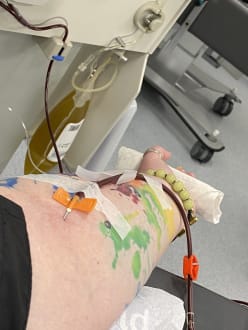There are two irreconcilable versions of how that calm shattered. Rueda says that Noah was crying, and she picked him up, sat on the couch and gave him the bottle to help put him to sleep. While she was feeding him, she felt Noah’s arm go limp, and when she moved to take the bottle out of his mouth, he made a sound that she didn’t recognize. I could tell something was happening,
she says. She stood up and put Noah on her shoulder, patting him on the back. As I did this, his body tensed up in a ball. It was as if he was looking for air, and he couldn’t breathe.
Rueda put Noah on the floor and started CPR, at the same time reaching for her phone to call 911. She put the dispatcher on speakerphone so she could keep tending to Noah. I said, ‘Please, please get someone here’,
she said. I knew it could hurt him if there wasn’t enough oxygen going to his brain.
Erin Whitmer’s account of the moments before Noah lost consciousness is entirely different. Around 2:30 on April 20, 2009, Noah was shaken,
she wrote on her blog Noah’s Road, on the one-year anniversary of the incident. He’d been crying. He needed something that his day care provider wasn’t providing him. Maybe he was tired of lying on the mat where she’d had him. Maybe he needed a hug, a laugh, a kind touch. Instead, she picked him up, her fingers gripping him tightly, feeling the softness of his velour pants and his cotton onesie under her fingers, and she shook him.
Whitmer’s account of what Rueda must have done to Noah was based on evidence presented at Rueda’s trial and information from the doctors who treated him after he was rushed to Inova Fairfax Hospital. The doctors gave Noah a CT scan, which showed subdural haemorrhaging (bleeding in a space between the skull and the brain) and an ophthalmological exam revealed retinal haemorrhaging (bleeding at the back of the eyes). Also, his brain was swelling. For decades, these have been the three telltale signs linked to the kind of child abuse commonly called shaken-baby syndrome — via redwolf.newsvine.com














 RSS – Posts
RSS – Posts